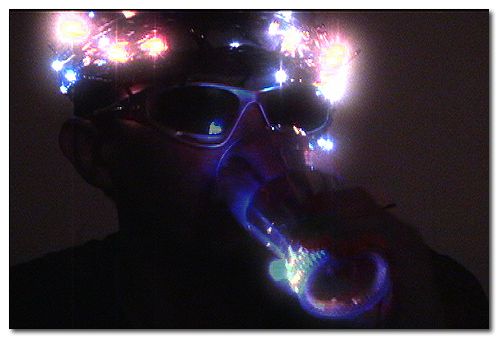Paris Biennial,
Oct 01, 2006 - Mar 01, 2007
Paris, France
Paris Biennale
by Manuel Cirauqui
The main interest of Closing Time lies in its double temporality, in its capacity for splitting in two. The performance phase of Closing Time was followed by the constructive, formal phase, during which a set of documents - true or imaginary - stemming from the preparation, production of workshops, brainstorming, etc., were remade as part of a cinematographic fiction. In this way Closing Time became a project that followed itself. It is also, still (as I write this) a theoretical-artistic event capable of assessing its own repercussions, an agency capable of creating its own software for a long-term appraisal of its own social impact, i.e., its capacity for creative anticipation. In that measure, the research opened up by Closing Time is never-ending, with an undefined duration. The concept of anticipation is thus subjected to a three-fold semantic processing: one, anticipation of a "culture" to art through its blocking strategies; two, anticipation of art in general to these cultural forms of neutralization; three, anticipation of Closing Time to its own impact, the creation of a perception of itself that arises almost simultaneously to its own existence (a device for perception that sees itself, watches itself seeing). The need for the project to see itself from the outside imposes on it the obligation to weave a fiction of which it is the protagonist. In other words, the project’s way of making anticipation its subject-matter involves an understanding of itself that must be fictional. The film Closing Time is thus broached not as a closing with celebratory fanfare, but as a response to the problems set forth within its working framework. If fiction structurally implies a sort of distancing, then self-storytelling is a means of making an issue of fictional distancing - a paradox of the continent that is also content.
If anything can be attributed to the idea of fiction undertaken by some participants - which the actual presentation of the project emphasized- it is the conception, perhaps utopian conception of discontinuity. "Closing Time is fiction art, FA, the discontinuity of imaginary time with regard to the linearity of the real." It is worth asking to what extent imaginary time does not precisely match the continuity of real time, if such a distinction still makes sense following the historic criticism (the unveiling) of ontology itself as a "story" (particularly following poststructuralist authors such as Lyotard or Barthes). Following the same line of reasoning, the mimetic nature of imaginary time obliges one to be suspicious of the quotient of freedom contained in fictions. The author Paul Auster defines this problem when he describes a writer who "enters the lives of unknown people, as these people hold the book in their hands, to them its words are the only existing reality" (Leviathan). If in the framework of Closing Time something can be distilled from ideas such as that of María Mur Deán ("I didn’t know Koldo until I made fiction out of him. We had only come across each other couple of times at parties, then again at a radio station, and little by little I turned him into Luis"), it is that fiction precedes reality. The pregnancy of fictional devices would be nonexistent if they did not serve to reveal that fiction is the very texture of the real. In these terms, the only difference between "the real" and "the imaginary" is a difference of intensity, based on the authority exercised by certain fiction-producing bodies (or institutions) over others (that are no less productive). If the density of the real is the result of a multiple fictional intersection subjected to a constant exercise of power, the need to produce fictions subjectively under categories such as "novels" or "oral stories" or "film" lies in the lightness of these fundamental methods. Mimesis provides us with an illusion of clarity.
|











